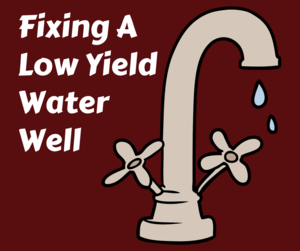CALL TODAY 1-800-441-6281
CALL TODAY 1-800-441-6281

What Causes Air Bubbles in my Well Water
- Tags:
- water contamination
Water Bubbles in Your Well Water Indicate Potential Problems
It is not unusual for homeowners to see a few air bubbles appear in a glass of water poured from the kitchen faucet. However, there are some instances where larger amounts of bubbles similar to effervescence will appear in the glass. There are both naturally occurring and mechanical reasons for these small white bubbles, many of which pose no health risks. There are some causes that could be problematic and may require water testing to rule out.
Naturally occurring bubbles
When you draw your water from the ground, especially if your home has a bedrock well, there is a likelihood these bubbles are dissolved gasses. A variety of natural reactions can cause gasses to dissolve in your well water. Some of these gasses include carbon dioxide, hydrogen sulfide or radon, a hazardous gas that is present in groundwater in some areas of New Hampshire.
Methane is also another dissolved gas that could be the cause of small bubbles in your well water. Methane gas is generated from decomposing organic matter in groundwater. It is odorless and colorless. At high concentrations, it can be explosive and is a fire hazard if large amounts of water with methane are used near an open flame in a closed space.
Temperature and pressure on the water located deep underground are the two main factors when it comes to dissolved gasses in water. If the pressure at the bottom of a bedrock well is high, or if the depth of water is great, a higher concentration of some gasses can be dissolved into the water. When the water is pumped up from the well into your home, the pressure is reduced, and the gasses can release into your water in the form of small bubbles.
Water at lower temperatures has a greater ability to hold dissolved gasses than warmer water. When you pump cold water from a bedrock well into a home, the water is warmed, and the gasses present will be released as a solution, again producing those bubbles.
In most of these cases, the bubbles are nothing to worry about, but if you live in an area that has higher rates of radon, you will want to have your water tested and discuss the options for removing this hazardous gas from your home water supply with water system professionals like Skillings & Sons.
Mechanical causes of air bubbles
Sometimes water bubbles occur when the water level inside a well is low, causing air to get into the pump. When water inside a well “draws down” drastically, it could indicate the pump is too large for the well. Drought conditions can also cause the water level to drop. One way to prevent this from happening in the short term is to reduce the amount of water used in the home. Homeowners can also install a drawdown cutoff device that prevents over-pumping. Repeated excessive drawdown of a well is something to watch carefully because it can lead to the pump motor overheating and damage the pump.
Some water treatment devices, especially those used to remove iron and manganese, pump air into the water as part of the process of removing impurities. Water should then be routed to a tank that removes the excess air. If excessive amounts of air bubbles remain, check to see the system is working properly and that it was sized correctly for your water usage. Homeowners can also adjust the air-to-water ratio setting.
The cause of the water bubbles could also be as simple as the type of faucets in the home. Some faucets create turbulence in the water that result in air bubbles. By replacing the faucets, it’s a relatively easy way to rule out one of the causes for excessive air bubbles.
There are a number of other causes, which can easily be fixed with a few adjustments to a home’s water system. Seeking the help of water system professionals will help you save time determining the cause.

